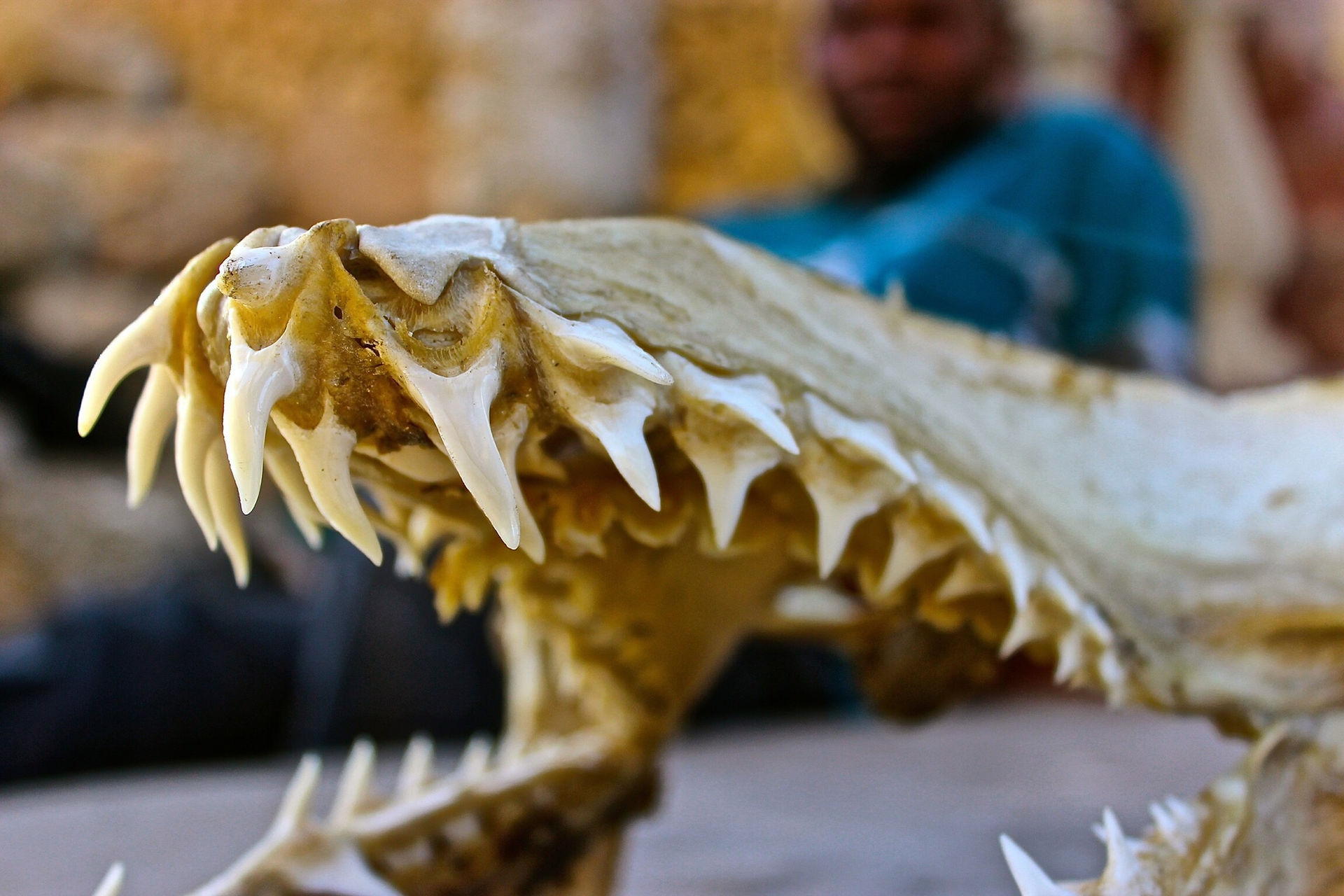Puncture-Pull Dinosaur Bites? Grasping Claws? Feathered Lizards? Throat Rumblings?
- Ricki Joyner
- Jul 26, 2018
- 3 min read
What is the Puncture-Pull Method:
A study of dinosaur teeth, especially the predators teeth revealed small clues and hints as to how a dinosaur would bite and how their teeth worked. "Puncture-Pull method, is the animal would bite into its prey and pull its head back away from its prey to slice and rip off parts of flesh and meat."
"Dinosaur teeth are shaped similar to knives, with a sharp curve at the front and serrations on the back which act like steak knives in cutting through meat."

Birds of Prey?
"Dinosaurs are related to birds and to see how a Tyrannosaurus Rex or a Velociraptor would eat its prey is to look at modern animals. Behavior doesn't change, how a vulture or an eagle holds the carcass with its foot and jerks its head back to tear off bite size pieces. This is more than likely how theropod dinosaurs ate." Benjamin Lewis.
Hands and Claws?
"The common interpretation of dinosaur hands is that they bend forwards and allow the dinosaur to open doors. I often call them piano hands as it looks like the dinosaurs are ready to play piano. Dinosaur arms were not built like that, in fact they would have to be broke in several places to allow their hands into that position."
"Think of dinosaur hands as grasping hands, tucked either side like birds wings but their hands face inwards like when we clap for instance. Dinosaurs hands were made to grab hold of prey not for playing a piano."
Were they just Angry Birds?
"Some were so closely related to birds that they look like birds with reptilian snouts. Take Velociraptor for instance. It stands roughly the size of a modern turkey, walks on two hind legs with its arms tucked against its side like a bird. The raptor's skeleton was filled with air-sacs and hollows like modern birds and was covered in feathers. Large bird like feathers along its forearms and legs, at the back of the head and neck. Covered in feathers. What would make it look slightly different from modern birds is the snout, which is more reptilian and looks nothing like a beak; and the large sickle-claw on the middle toe."
"Not all dinosaurs evolved into birds, only certain species may have evolved into birds. It's easy to forget that their were birds in the skies when T.Rex roamed the Earth."
Can we tell what Color dinosaurs were?
"Surprisingly, yes. We've found melanosomes in fossils and impressions of feathers. melanosomes are microscopic pigments that contain the color of the feather. We can use modern bird feathers to match the melanosomes to give us an almost perfect interpretation of the animals color."
"Through this we have found that some were a mixtures of browns, reds, yellows, grays and blacks. Similar to birds today. We could have a dinosaur similar to an cassowary with a blue head and black feathers or ones like a parrot these bright colors. In predators much more likely to be earthy in color to break up their silhouette; but they would have some color on the face, skull, neck and even on the arms for display."
Did Dinosaurs Roar?
"Well it's hard to confirm that as dinosaur vocal chords don't preserve too well. We would like to imagine a large predatory dinosaur roaring really loud and scaring us like in the movies. Roaring is very much a mammalian thing, all mammal predators are able to roar. When we look at dinosaurs closest living relatives we find the birds and the crocodiles don't roar. They use a form of communication called closed-mouth vocalization. Its passing of air through their throat and lungs to produce vibrations that rumble out. For example alligator mating displays, their rumbles can be heard fro miles by members of their species. Dinosaurs would be the same. However, if you factor into the size of these animals these low frequency calls would be more scary. You wouldn't just hear the calls but would feel it ripple through you. And that's why I think this would make dinosaurs more terrifying."
This was an interview with Dr Benjamin Lewis on dinosaurs. Designed to teach people about the modern theories on dinosaur anatomy, color and sounds.




Comments